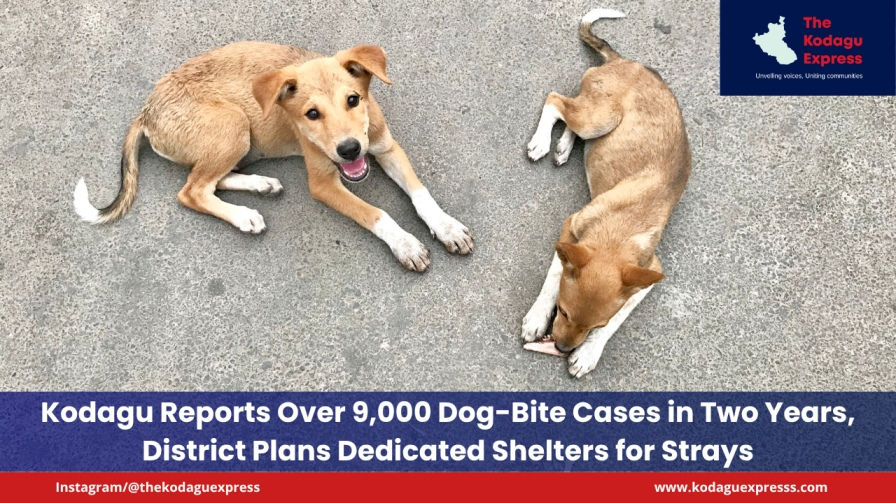New Genetic Research Traces Kodava Ancestry to 3,000 Years Ago
- Saritha Devaiah Ballachanda

- May 18
- 3 min read

NEW DELHI: In a pioneering genetic study, researchers have traced the ancestry of the Kodava community—also known as Coorgs—to nearly 3,000 years ago, shedding new light on their origins and reaffirming the uniqueness of this small but culturally rich group residing in the Kodagu region of Karnataka's Western Ghats.
Published in Communications Biology and reported by The Telegraph, the study represents the first scientific effort to explore the genetic make-up of the Kodavas. This comes in the wake of decades of speculation about the community's lineage, with various theories linking them to the troops of Alexander the Great, Central Asian migrants, or indigenous South Indian populations.
Conducted by researchers from the University of Delhi South Campus and the Centre for Cellular and Molecular Biology (CCMB) in Hyderabad, the study analysed genetic material from 144 Kodava individuals. Their aim was to map genetic similarities and differences between the Kodavas and other ethnic groups.
The research uncovered three genetically distinct clusters within the Kodava population—designated as Coorg-1, Coorg-2, and Coorg-3. Among these, Coorg-3 is the most ancient, with origins dating back approximately 98 generations, or about 3,000 years. Coorg-1 separated from other populations around 64 generations ago, roughly 1,920 years in the past. Coorg-2, the most recent group, appears to have emerged around 330 years ago as a result of intermixing between Coorg-1 and Coorg-3.
Coorg-3, the oldest group, is particularly remarkable for its genetic distinctiveness. Yet, the ancestral population from which it originated remains unidentified. Interestingly, this group also showed signs of genetic mingling with northwestern Indian populations around 690 years ago, or 23 generations in the past.
The study further revealed that Coorg-1 and Coorg-2 differ genetically from other major ethnolinguistic groups in Karnataka, such as the Kannadigas, Konkanis, and Tuluvas. Coorg-1 displayed a strong genetic resemblance to the Palliyars, a hunter-gatherer tribal group residing in the southern Western Ghats, suggesting an ancient connection.
The fusion between Coorg-1 and Coorg-3 is believed to have started around 11 generations ago—about 330 years in the past—resulting in the formation of the Coorg-2 lineage.
Researchers propose that longstanding social practices, including marriage within the caste and avoidance of unions within the same family line, may have contributed to the preservation of these distinct genetic groups over time.
Professor B.K. Thelma from Delhi University, along with co-authors K. Thangaraj, Anirban Mukhopadhyay, Loumos Kumar, and Kiran Sran, emphasised that the genetic continuity of the Kodavas highlights how cultural traditions can influence genetic structures across generations.
While earlier research has generally shown that most Indian populations are a blend of two primary ancestral sources—Ancestral North Indians and Ancestral South Indians—dating back between 1,900 and 4,200 years, the Kodava lineage has remained an enigma.
Over the years, historians and anthropologists have proposed varied theories, suggesting Kodava ties to Alexander’s 4th-century BCE military campaigns, the Indo-Scythians or Sakas who migrated from Central Asia during the 2nd century BCE, or even to ancient tribal communities native to the southern Western Ghats.
Further genetic analysis added nuance to the story. Around 40% of mitochondrial DNA—passed from mothers to children—was found to have South Asian origins. Meanwhile, the Y-chromosome, inherited from fathers, displayed markers common to Eurasian, Middle Eastern, and Indian populations. This pattern suggests historical male-centric migrations from these regions and the subsequent blending with local South Asian women.
To advertise on The Kodagu Express website, kindly call us at 9108795369 or mail us at thekodaguexpress@gmail.com
Join The Kodagu Express WhatsApp Group: CLICK HERE
Follow us on Instagram and X(Twitter)




This study has not taken into a/c the the present Iraq - in the past ' Kurdistan' where the Kurds ' cultural practices have striking similarty between Coorgs ( Kodavas) in India and Kurtds of present Iraq. It dates back to the Khaliphate times as observed by some non- Kodavas .
There is an airport in ' Muthanna' in Iraq!!
Muckatira name too is very common there as indicated by a few Coorgs who visited Iraq!!
Dravidians themselves are from South Asia?
So. Kodavas are different?
Does it matter?
How they lost their language of ancestors?
Kodava language now is a mix of three local/regional languages is the theory?